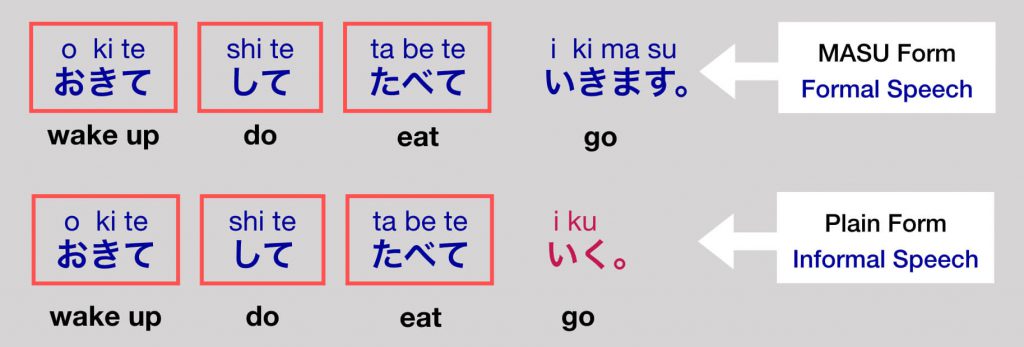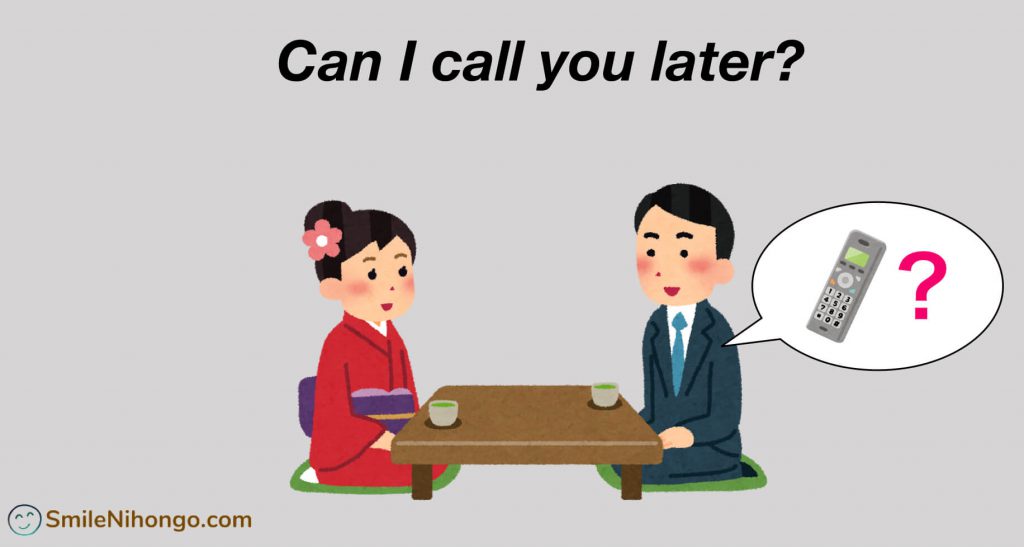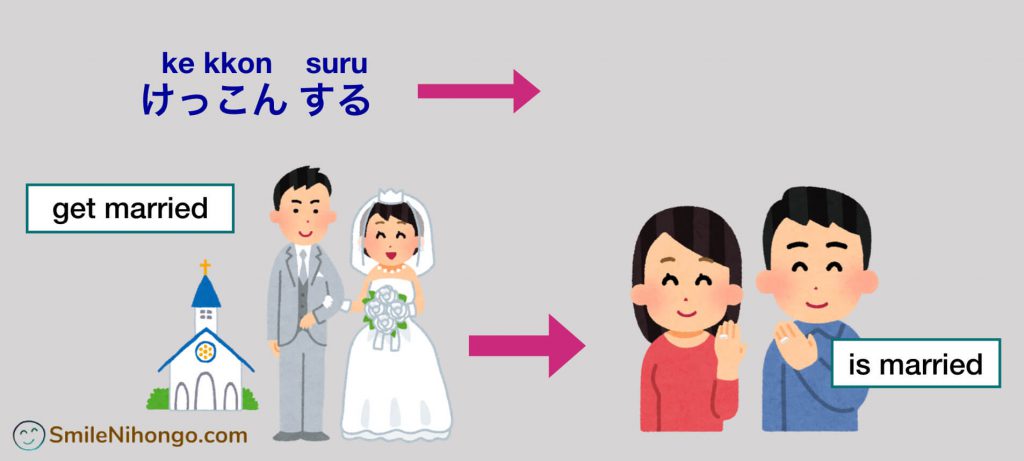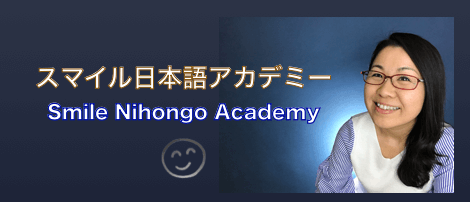What is TE form? TE form is one conjugation form of a Japanese verb. People use the TE form to create various expressions in Japanese. Once you master the TE form, it will greatly expand your Japanese communication skills.
How Do I Use TE Form?
What do I mean that TE form is used to create expressions? Let me show you some examples.
When you make an expression “please eat” in English, you leave the verb “eat” as is and simply add “please” before that. Right? This is English.
If you want to make the same expression in Japanese, now you need to use the TE form. The verb “eat” is たべる TABERU in Japanese, but it’s the plain form of the verb, so we need to change that into the TE form, which is たべて TABETE. And add ください KUDASAI after that.
So, “please eat” in Japanese is たべてください TABETE KUDASAI. Keep in mind that it’s not たべるください TABERU KUDASAI.
So, this 食べて is the TE form of the verb “eat.”

Let me show you another example.
If you want to say “you may eat” or “it’s ok that you eat” now you need to change the verb to the TE form and add MO IIDESU. So, “you may eat” in Japanese is たべてもいいです TABETE MO IIDESU.

If you want to say the opposite, “you may not eat” now you add はだめです WA DAMEDESU to the TE form and say たべてはだめです TABETE WA DAME DESU.
If you want to say “I am eating right now” then you add います IMASU to the TE form and say たべています TABETE IMASU.

Like this, TE form can create so many different expressions depending on the phrase that you add to it. This is what I meant by that TE form is used to create various expressions. It is crucial that you know how to make TE form so that you can understand and also make expressions in Japanese as you like. You can learn all about TE form in our TE Form Master Course.
5 Things You Need to Know
Let me walk you through the 5 important things that you need to know about Japanese TE form.
The Final Letter is て TE or で DE
The final letter of TE form is either て TE or で DE. Some TE forms have て TE at the end like たべて TABETE, and other have で DE as in よんで YONDE.
It all depends on the verb, and we are going to learn how to come up with the correct TE form in the TE Form Master Course.
TE Form Creates Expressions

As we just discussed, TE form is combined with a phrase and create an expression. As you already know, “you may eat” is たべてもいいです TABETE MO IIDESU. “I am eating” or someone is eating is たべています TABETE IMASU.
If you want to make a polite request, “Would you please eat?” then you say たべてくれますか TABETE KUREMASU KA? There are so many more expressions that take TE form like these, and we are going to cover many of them in this course.
List Multiple Actions
TE form is also used to list multiple actions in one sentence. For example, let’s say you want to say something like this. “I wake up at 6, do yoga, eat breakfast, and go to work.”
In English, you can just list all the verbs as they are in one sequence as below, right? In Japanese, you have to change them into TE form except for the final verb that ends the sentence. So, it’s going to be like this. わたしは Watashi wa 6じにおきて roku-ji ni okite, ヨガをして yoga o shite, あさごはんをたべて asagohan o tabete, しごとにいきます shigoto ni ikimasu.

Like this, out of the four verbs in the sentence, you change the first three into TE forms, and end your sentence with the MASU form.
TE Form Has No Tense
TE form has no tense. It’s completely neutral. It can be future tense, present tense, or past tense. It’s all determined by the end of the sentence.
For example, take a look at the sentence above. It ends with 行きます IKIMASU, right? It means this sentence is in the present tense. Since masu form can also indicate future tense depending on the context, if you have the time expression like “tomorrow” in the sentence, then, of course, all the verbs are going to be in the future tense.

Now, take a look at the sentence below. You have all the same TE forms as in the first sentence, but the ending is different. Now you have the verb in the past tense “went” いきました IKIMASHITA.
Because of the verb いきました IKIMASHITA at the end, now this entire sentence is in the past tense. So, here the TE form おきて OKITE means “woke up” not “wake up,” して SHITE means “did” and たべて TABETE means “ate.”
Like this, TE form doesn’t have any tenses. It is entirely influenced by the main verb that comes at the end of the sentence.
TE Form Has No Speech Style
In the same manner, TE form doesn’t specify any speech style. It can be used in the Formal or Informal speech. Again, what matters is how you end the sentence.
In the first sentence below, you have いきます IKIMASU at the end. MASU form indicates formal speech, so you are saying the sentence in the formal style.
On the other hand, in the second sentence, you have the plain form of the verb “go” which is いく IKU at the end. Ending a sentence with a plain verb means you are using the Informal speech.

Like this, even though the TE forms in these two sentences are completely identical, the first sentence is formal speech and the second sentence is informal speech because of the endings.
What is TE Form? – Learn All About It!
What is TE Form? Now you know how it works and the 5 crucial things you need to keep in mind when you use your TE form. Let’s go over the five key points one more time.
- The final letter of TE form is either て TE or で DE.
- You combine TE form with a phrase and create an expression.
- You use TE form to list multiple actions in one sentence.
- TE form doesn’t have any tenses.
- TE form doesn’t specify any Speech Style.
From here, you are going to learn how to make TE form and learn many expressions that require TE form. Below are just example expressions that we will cover in the TE Form Master Course.




The course comes with videos, MP3s, and PDF worksheets that you can download. Join me in the TE form master course and you’re going to learn all about TE form!
Leave me comments if you have any questions. では、また。Dewa, mata.
裕子先生(ゆうこせんせい)Yuko-sensei


It was very helpful for me to learn that て form does not represent a tense nor style of speech. And when you say it is completely neutral, does that also apply to polarity (positive or negative)? Could you say, “I wake up at 6, do yoga, *don’t* eat breakfast, and go to work”?
Konnichiwa Kris-san, I’m glad the lesson was helpful.
Unfortunately, it doesn’t apply to polarity. When we list verbs in negative form, we use the negative TE Form.
“I wake up at 6:00, do yoga, don’t eat breakfast, and go to work” > 6じにおきて、ヨガをして、あさごはんを*たべないで、しごとにいきます。6-ji ni okite, yoga o shite, asagohan o *tabenaide, shigoto ni ikimasu.
We have two kinds of negative TE Form and use this version “-NAIDE” to describe a routine as above.
To create this type of negative TE Form, you have to know NAI form for Japanese verbs and add で (DE) to it.
たべない tabeNAI → たべないで tabeNAIDE
I briefly explain NAI form in this lesson. https://youtu.be/tvrmaKlz58Q
Hope it helps! では、また。
easy to catch-up ad understand,..arigatou gozaimashita…
Edison-san, Doo itashimashite. (You are welcome!)
I’m glad the lesson was easy to understand. ?
And why do I need all other forms if I can use only te form?
You cannot only use TE Form. Certain expressions in Japanese require other forms of verbs.